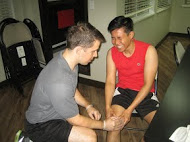The skin is one of the largest body organs that has numerous functions for instance, regulation of body temperature, production of vitamin, sensation etc. When there is a cut through the skin we call the ‘cut’ a wound. There are two types of wounds namely; acute and chronic wounds.
Chronic wounds refer to those that are not responsive to treatment within the period when they are expected to heal. This may be caused by various factors such as lack of proper dressing and poor nutrition. On the other hand, acute wounds refer to those wounds that result from the damaging of the tissue by trauma. This could be intentional for example surgery. Other causes include: accidents, electricity, heat and friction. The expectation of an acute wound is that through the process of normal healing it will finally close. These wounds whether chronic or acute need to well taken care of.
What is wound infection?
This refers to the presence of organisms or bacteria which lead to the reaction of the host. Indicators that will tell you that a wound is infected include; exudate increases or changes its color, redness especially around the wound, Malodor, localized heat and pain and delay in healing.
How do you manage a wound?
Your body normally takes between zero and three days to respond to an injury. This stage is known as inflammatory phase. At this stage vasodilation is activated which leads to increased blood flow thus causing pain, redness, heat and loss of function.
The second stage in the healing process takes place between three and twenty-four days and it’s the time when the wound is healing. At this stage, the body is making new vessels to cover the wound. The wound is now narrowing headed to healing.
The last stage takes place as from the 24th day till the wound heals. This phase is final in the healing process. This is the stage where the scar is formed.
How do you care for the wound?
Cleansing the Wound
Always apply fluid so as to remove all the debris tissues, remove the dressing residue and the dry exudates to make the healing environment clean. The cleaning of the wound should be done carefully so as to minimize further damage to the wound. This is better done using sterile saline which of course should be isotonic or water. It is also important to use wound cleansers which are non-toxic and have a neutral pH.
Dressing
Not all wounds are suitable for dressing and therefore sound judgment should be made before deciding whether to dress or not dress the wound. In case you need dressing, your hands should be clean before you touch any dressing.
Moist Environment
Maintain a moist environment for faster healing of the wound. Also, protect the wound from any external environment in order to avoid bacteria coming into contact with the wound.
Temperature
Endeavor to keep the wound close to the temperature of the body.
Clothing
Wear those clothes which are loose so as not to cause trauma to the wound by getting into contact with the wound.
